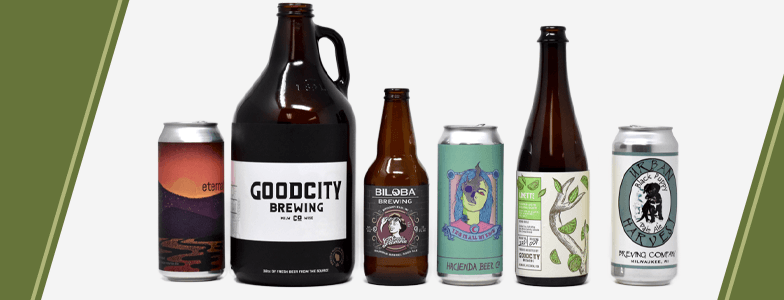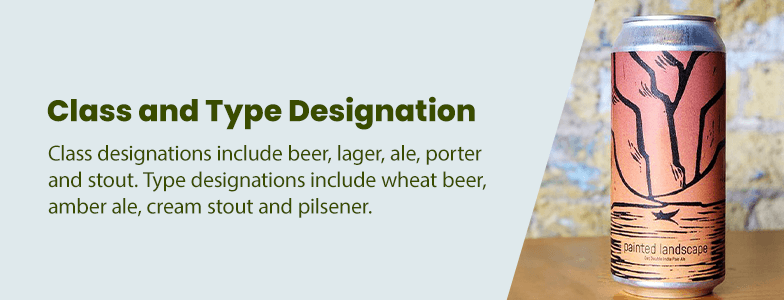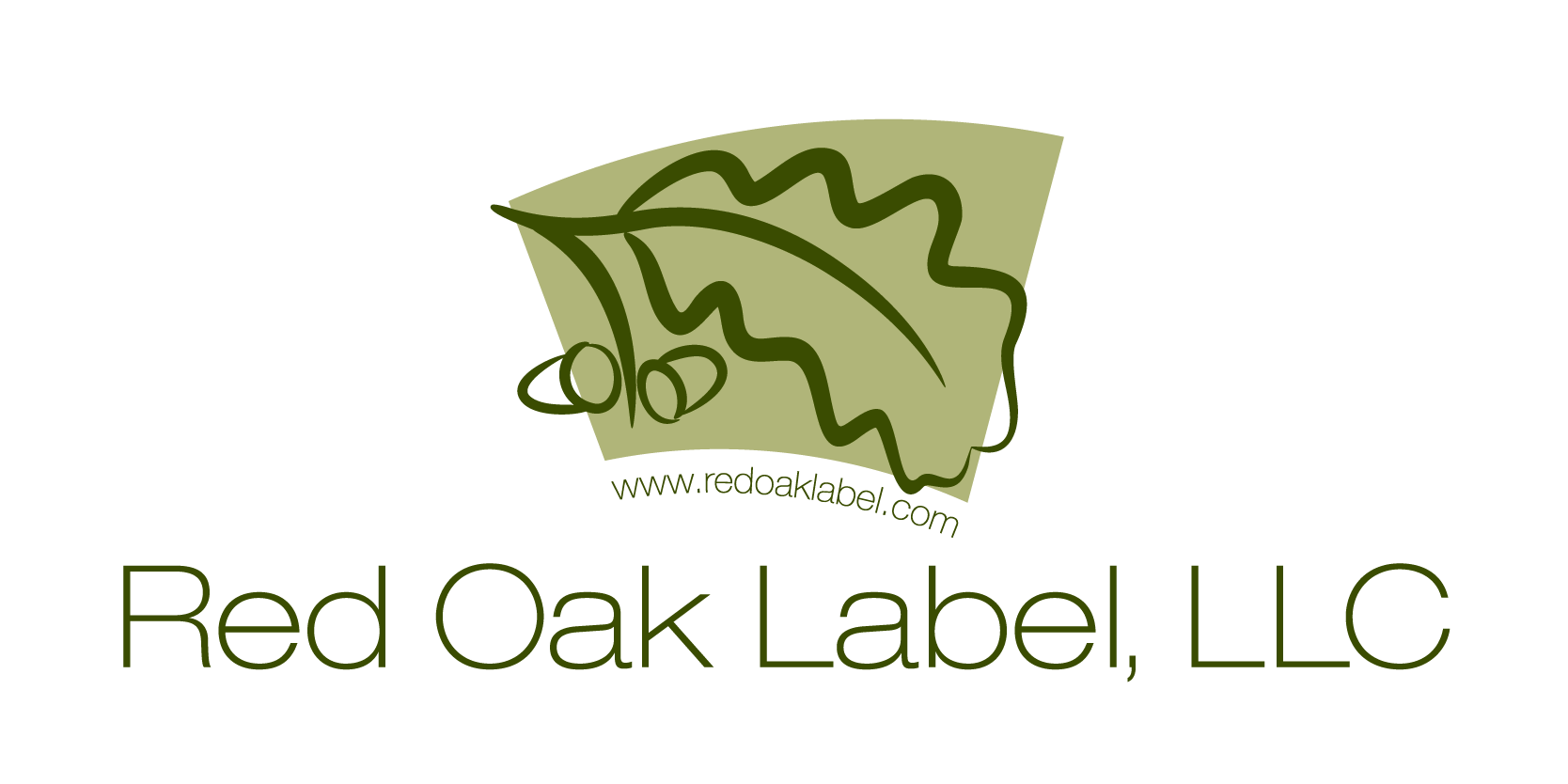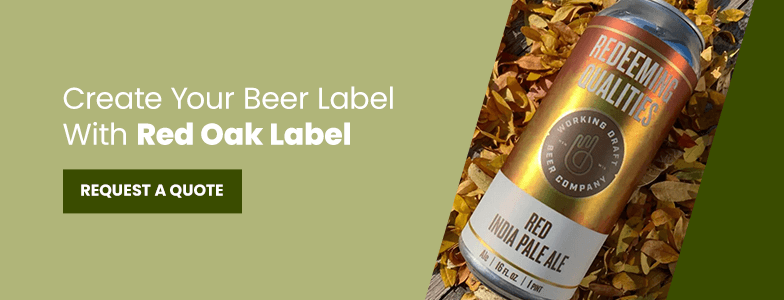
Whether you operate a local microbrewery, a regional craft brewery or a large-scale macrobrewery, a lot goes into designing your product labels. Before starting your design, it’s important to know what information you must include to remain compliant.
The United States Alcohol and Tobacco Tax and Trade Bureau (TTB) monitors the production and sale of beer and other alcoholic beverages. If you make beer for anyone other than yourself and your family, you must get TTB approval for both your operations and labels. The process for TTB label approval includes filling out an application for a certificate of label approval (COLA) in addition to submitting the required forms with beer labels.
Required Elements for Your Beer Label
The TTB requires you to include certain elements on your beer label. Many of these are points you would likely include anyway, such as your brand name and the type of beverage — however, there are some specialized requirements you should take care to include in your label so you remain compliant with federal and state laws.
The elements needed on all beer labels include:
1. Brand Name
It’s essential to include your brand name on the front of your beer labels — both because the TTB requires it and because it provides a sense of consistency across all your products. Most beer labels include the product name — also known as the fanciful or descriptive name — in the most prominent position on the design, but your brand name or logo should also be clearly visible.
According to the TTB, your brand name must:
- Be in a type set of at least 2 millimeters (mm) for containers ½ pint or larger and 1 mm for containers ½ pint or smaller.
- Be legible in normal conditions and appear on a contrasting background.
- Be separate or distinct from other explanatory information.
2. Country of Origin
If your beer originates outside the U.S., the English name of the country of origin must appear on the label. If any of your ingredients or raw materials originate outside the U.S., you may need to look into specific customs regulations.
3. Name and Address
The bottler’s name and address should appear on the label or container. If your brewery only has one domestic bottling location, the label must list the city and state. For imports, you can include the importer’s name and principal business location. For breweries with multiple bottling locations, the TTB has some distinctions on which location must be listed on the label.
In terms of design and appearance, the name and address should follow the same TTB requirements as the brand name.
4. Class and Type Designation
Another element that should appear on the front label of your product is the class and type designation. The TTB requires the inclusion of the class designation, while the type is optional. Class designations include beer, lager, ale, porter and stout. Type designations include wheat beer, amber ale, cream stout and pilsener.

For example, India pale ale (IPA) is a particular class and type of beer. Similarly, beers with geographical names must be produced in the specified country — a Belgian ale must be imported from Belgium, but a U.S. brewery could produce a Belgian-style ale. You should also consult the TTB’s site for specific information on the rules for class and type designations with special ingredients or production methods.
5. Alcohol Content
You must also include a numerical figure on the label that states the alcohol content of the beer, represented as a percentage of alcohol by volume (ABV). Alcohol content statements are generally required in all cases except where the alcohol content comes from added flavors or non-beverage ingredients.
To declare the alcohol content on your label, you can use a few different formats, such as:
- Alcohol __% by Volume
- Alcohol by Volume __%
- __% Alcohol by Volume
- ALC __% by VOL
- ALC by VOL __%
- __% ALC by VOL
The alcohol content statement on your label must also comply with the TTB’s type set and legibility guidelines.
6. Net Content
The net contents refer to the total amount of beer in the container stated in U.S. standard measures. The TTB specifies the type of measurement based on the size of the container:
| CONTAINER SIZE | REQUIRED MEASUREMENT | EXAMPLE |
|---|---|---|
| Smaller than 1 pint (pt.) | Fluid ounces (fl. oz.) or fractions of a pint | 8 fl. oz. or ½ pt. |
| 1 pint | Pints | 1 pt. |
| Between 1 pint and 1 quart (qt.) | Pints and fluid ounces or fractions of a quart | 1 pt., 8 fl. oz. or ½ qt. |
| 1 quart | Quarts | 1 qt. |
| Between 1 quart and 1 gallon (gal.) | Quarts, pints and fluid ounces or fractions of a gallon | 1 qt., 1 pt., 12 fl. oz. or ½ gal. |
| 1 gallon | Gallons | 1 gal. |
| Larger than 1 gallon | Gallons and fractions of gallons | 1 ½ gal. |
7. Disclosure and Declarations
Other elements required for your beer label are disclosures and declarations for ingredients such as:
- Color additives: If your ingredients include FD&C Yellow No. 5, cochineal extract or carmine, they must be clearly stated on your label.
- Sulfite and aspartame: Any sulfur dioxide, sulfiting agents or aspartame must be presented on the label in the required format.
8. Health Warning Statement
Following the Alcoholic Beverage Labeling Act (ABLA), the Surgeon General’s health warning must appear on all alcoholic beverages.
Other Elements to Include on Your Beer Label
In addition to the required elements, you might want to include:
- Special ingredients: Do you source all the fruit for your sour beers from a local family-owned orchard? Note that on the label! As long as the statement is truthful and accurate and does not mislead the consumer about the nature of your product, these additions can make your beer stand out.
- Gluten and food allergen statements: You can include gluten statements if your beverage falls under the approved “gluten-free” regulations of the Food and Drug Administration (FDA). Labeling food allergens is currently voluntary under the TTB, but you might add a statement if your ingredients or facility includes any of the major allergens.
- Nutrition information: While alcoholic beverages are generally exempt from nutrition labeling requirements, you may want to include information about the caloric content and carbs, as this is something consumers look for. If you claim your beer is “lite” or low-calorie, you’ll want to be sure you include the nutrition information to corroborate that claim.
- Mission statement: If you have a special mission or vision for your brewery, or your operations work to combat social ills, you might include a short statement explaining this on your beer label. Consumers like it when they know their purchase contributes to a larger goal.
What Not to Include on Your Beer Label
It’s essential to avoid making any false claims or misleading statements on your beer label. An example might be claiming that your product is “organic” when it doesn’t have the necessary certifications. Calling your beer a “Pumpkin Spice Ale” would also be considered misleading if it doesn’t contain pumpkin as an ingredient — even if it tastes just like pumpkin pie.
Use the TTB’s regulations as your guide to avoid making misleading statements on your beer label.
Making Your Beer Label Stand Out
In 2021, the U.S. produced 181 million barrels of beer. Looking at all the options available in the beer aisle, you’ll understand the importance of a good beer label. Design elements like colors, text and graphics all combine to convey an image of your product and brand to consumers. Keep an eye on the latest design trends in the industry so you can stand out from the competition and take your brand to the next level.
Create Your Beer Label With Red Oak Label
With a totally custom design process, Red Oak Label can help you create a beer label that is as unique as your brews. Whether you want a kooky disco-themed label for your hazy IPA or a special edition label for your new small-batch imperial stout, our design support staff is ready to assist!
Reach out to tell us about your project and get a quote on your custom beer labels.

